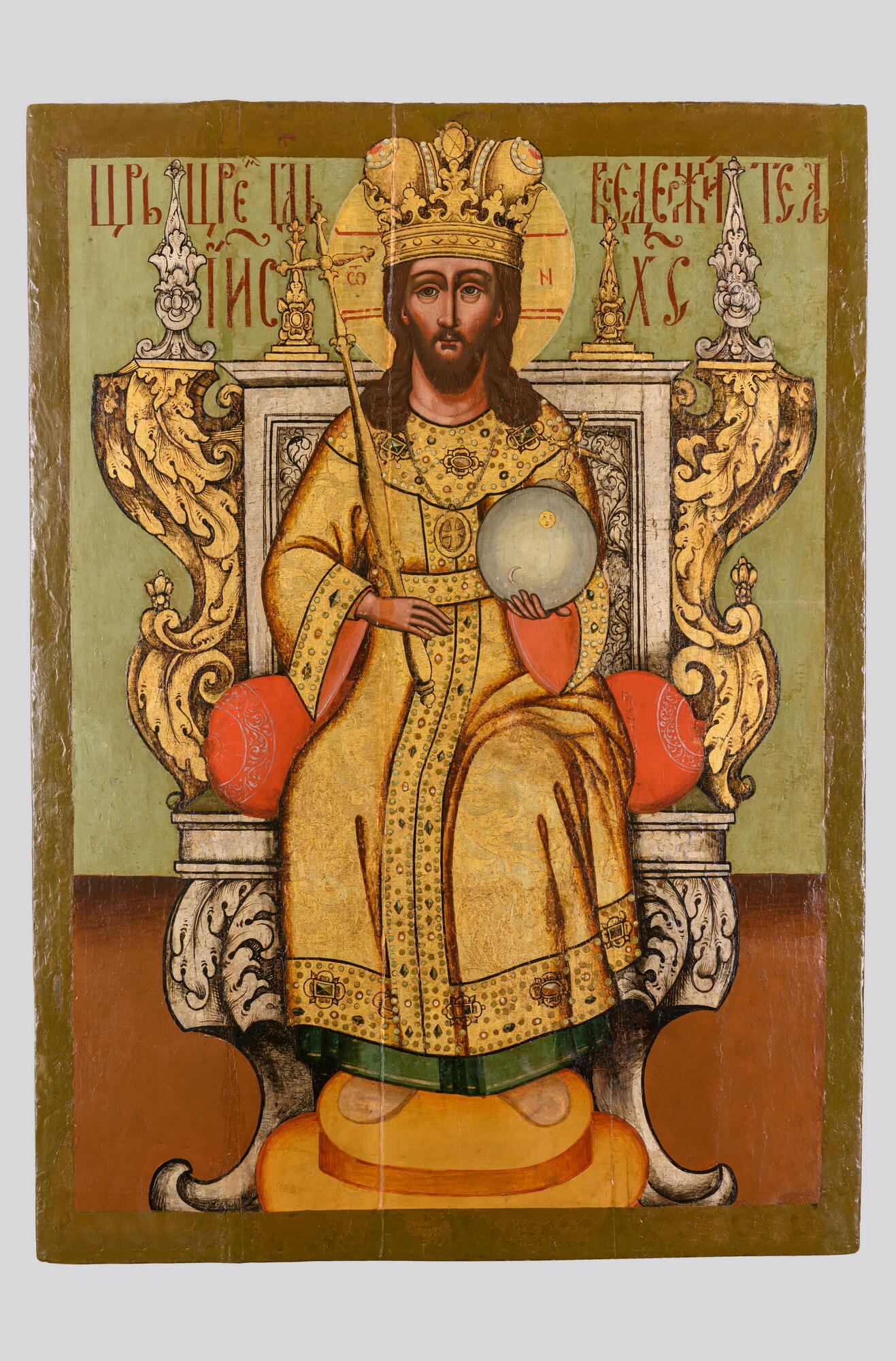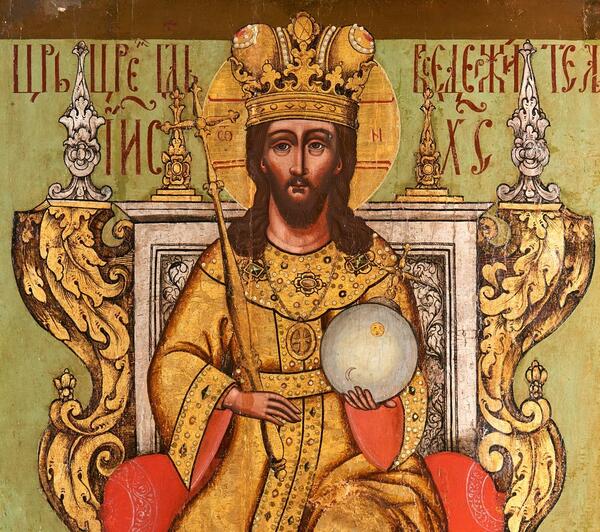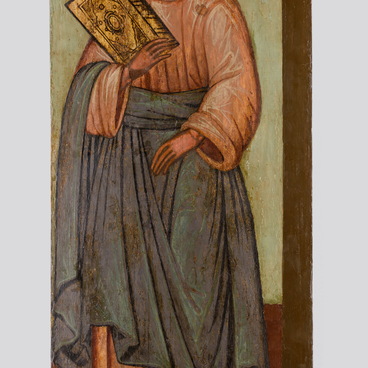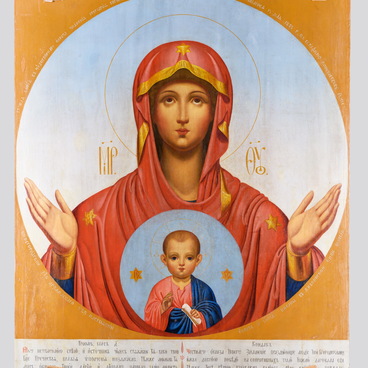The most solemn of the images of Jesus Christ, the main ones in Russian iconography, is the “King of Kings”, otherwise known as “King of Glory” or “Savior the Great Bishop”. Christ appears on such icons as the King, the Judge, and the New Testament High Priest.
This image is based on the words from the Book of Revelation of John the Theologian: “And He has on His robe and on His thigh a name written: ‘King of Kings and Lord of Lords’” (Rev. 19:16). Another source is the Pauline epistles: “He who is the blessed and only Potentate, the King of kings and Lord of lords” (1 Tim. 6:15), and “You are a priest forever according to the order of Melchizedek” (Heb. 5:6).
The first icon of this type is attributed to the Monk Alypius of the Caves, a monk of the Kyiv-Pechersk Lavra (the 11th–12th centuries). It was called “King of Kings”, or “The Queen Stands at Your Right Hand”: the Mother of God in royal robes and John the Baptist stand before the blessing Christ, who wears a miter, a sakkos with a pattern of crosses and an omophorion. Subsequently, it was this composition that became more common; the image of Jesus Christ without the two figures flanking Him is quite rare. The presented icon comes from the Nativity Church of Balakhna. The Savior’s face is depicted from the front and His gaze is fixed on the worshiper.
The clothes and attributes emphasize His royal and episcopal greatness. Those include the golden sakkos and lorus — a wide long ribbon decorated with precious stones, a pearl rim and rosettes. The shoulder strap is also embellished. The tall golden crown resembles both a miter and an imperial crown.
The scepter and the globus cruciger (the orb) are crowned with crosses; the orb is painted in gray tones, with the images of the moon and the sun on it. The throne is richly decorated with carved floral ornaments, gilding (the sides of the back) and silvering (the back and legs); the Savior’s feet rest on the light ocher stand at the base of the throne.
The face of Jesus is painted using chiaroscuro, which makes the image look three-dimensional. The icon was received by the Local History Museum of Balakhna for permanent storage on February 28, 1977. In July 2016, it was restored. The restorers noted that the style of the icon is similar to one housed in the collection of the Vladimir-Suzdal Museum-Reserve — “Christ the Great Bishop with the Venerable Sergius of Radonezh and Euthymius of Suzdal”. It has been established who and when created this icon: it was painted by a master of the Kremlin Armory and a student of Simon Ushakov, Georgy Terentyev Zinovyev, in Moscow, in 1681.
This is the central image of a number of icons painted in the same style, with a pale green background.
This image is based on the words from the Book of Revelation of John the Theologian: “And He has on His robe and on His thigh a name written: ‘King of Kings and Lord of Lords’” (Rev. 19:16). Another source is the Pauline epistles: “He who is the blessed and only Potentate, the King of kings and Lord of lords” (1 Tim. 6:15), and “You are a priest forever according to the order of Melchizedek” (Heb. 5:6).
The first icon of this type is attributed to the Monk Alypius of the Caves, a monk of the Kyiv-Pechersk Lavra (the 11th–12th centuries). It was called “King of Kings”, or “The Queen Stands at Your Right Hand”: the Mother of God in royal robes and John the Baptist stand before the blessing Christ, who wears a miter, a sakkos with a pattern of crosses and an omophorion. Subsequently, it was this composition that became more common; the image of Jesus Christ without the two figures flanking Him is quite rare. The presented icon comes from the Nativity Church of Balakhna. The Savior’s face is depicted from the front and His gaze is fixed on the worshiper.
The clothes and attributes emphasize His royal and episcopal greatness. Those include the golden sakkos and lorus — a wide long ribbon decorated with precious stones, a pearl rim and rosettes. The shoulder strap is also embellished. The tall golden crown resembles both a miter and an imperial crown.
The scepter and the globus cruciger (the orb) are crowned with crosses; the orb is painted in gray tones, with the images of the moon and the sun on it. The throne is richly decorated with carved floral ornaments, gilding (the sides of the back) and silvering (the back and legs); the Savior’s feet rest on the light ocher stand at the base of the throne.
The face of Jesus is painted using chiaroscuro, which makes the image look three-dimensional. The icon was received by the Local History Museum of Balakhna for permanent storage on February 28, 1977. In July 2016, it was restored. The restorers noted that the style of the icon is similar to one housed in the collection of the Vladimir-Suzdal Museum-Reserve — “Christ the Great Bishop with the Venerable Sergius of Radonezh and Euthymius of Suzdal”. It has been established who and when created this icon: it was painted by a master of the Kremlin Armory and a student of Simon Ushakov, Georgy Terentyev Zinovyev, in Moscow, in 1681.
This is the central image of a number of icons painted in the same style, with a pale green background.



